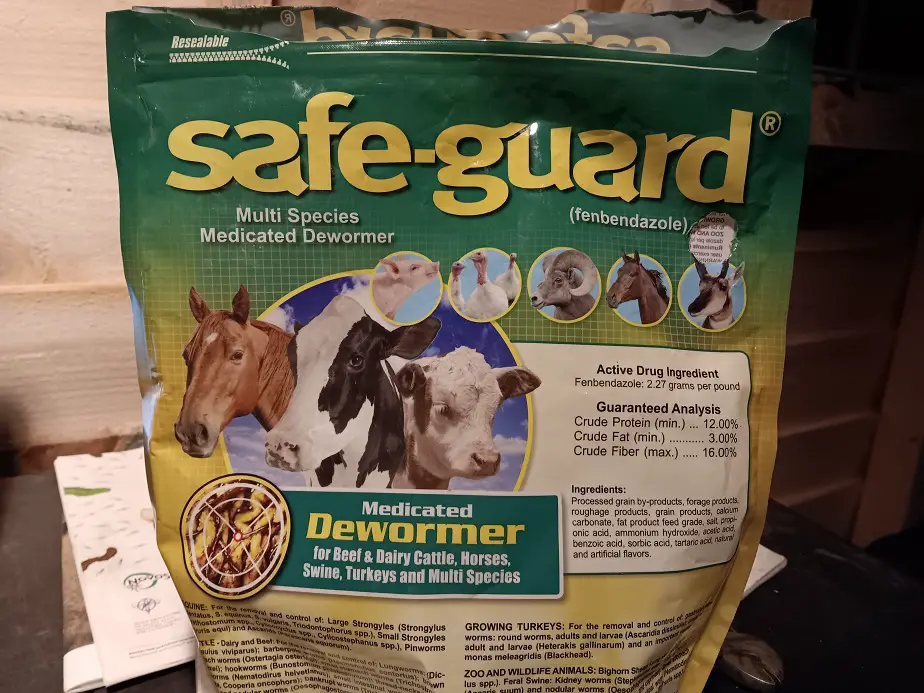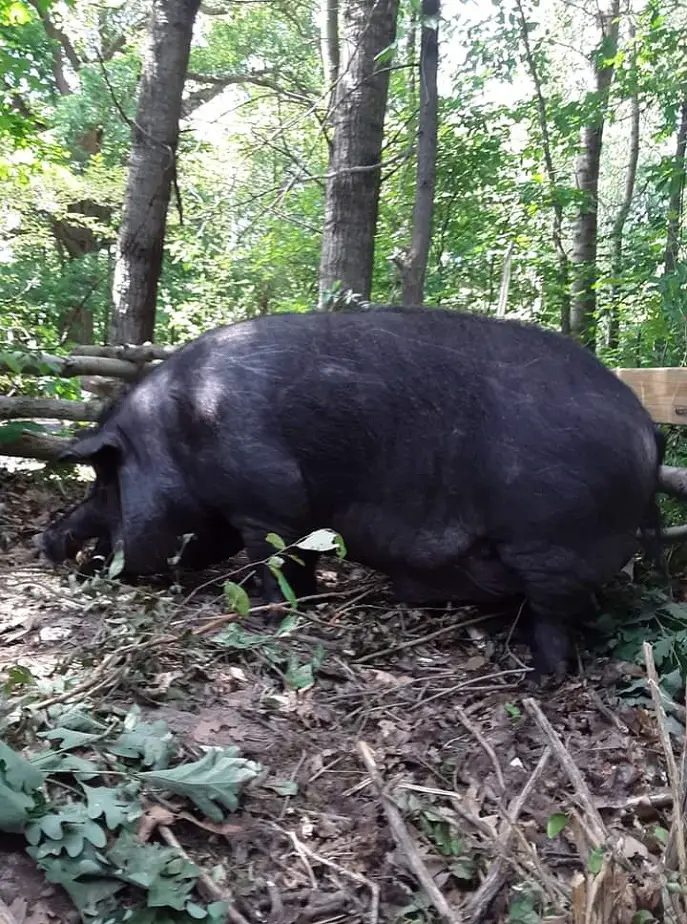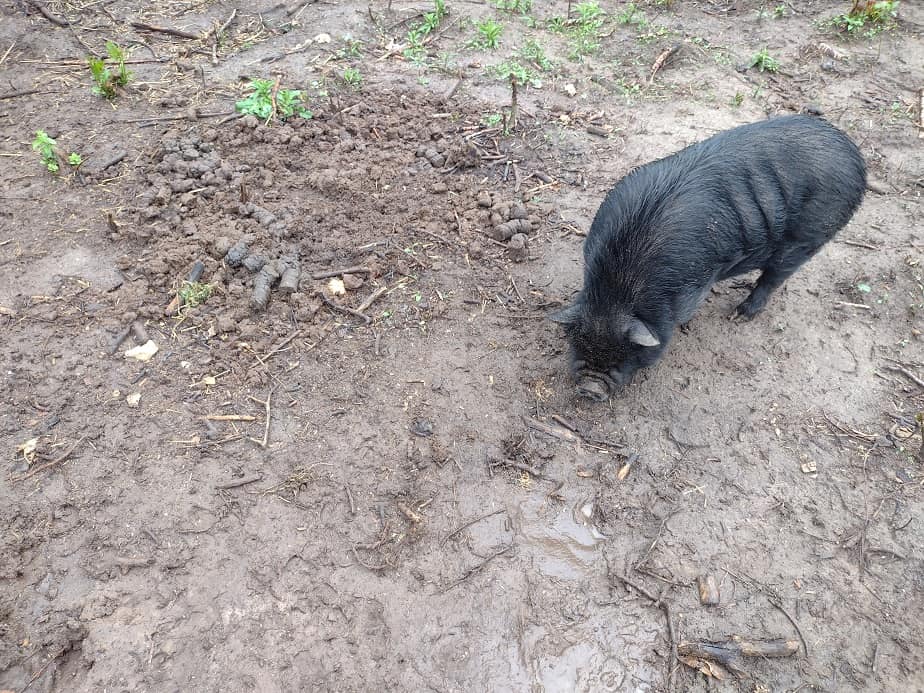Pigs have been an important part of the homestead for centuries. We’ve been raising pigs for a few years now and plan to keep it up.
Pigs do not need pasture but are often cleaner, happier, and healthier in pasture than in a small pen. A pasture supplies pigs with fresh greens and encourages more exercise. Pigs do well in a pig pen if it’s spacious and kept clean, but they do enjoy pasture more. Pastured pigs need supplemental feed
Domestic pigs don’t really get what they need from pasture. Let’s talk about what pigs need, and how we can meet those needs.
Why Pigs Can’t live off Pasture
Pigs are not grazing animals, they are omnivorous like us. Pigs need a diet full of balanced proteins and carbs just like people. Some proteins are available in perennial pasture crops, but not all of them are. The full selection of proteins pigs need are found in things like beans and mixtures of grains.
Here are the 10 proteins/amino acids that pigs need for healthy function.
- Arginine
- Histidine
- Isoleucine
- Leucine
- Lysine
- Methionine
- Phenylolanine
- Threonine
- Tryptophan
- Valine
Only Six amino acids are usually found in common perennial pasture crops. They are:
- Arginine
- *Cystine
- Histidine
- Isoleucine
- Leucine
- Lysine
*Cystine is not needed by pigs but may have health benefits to a small degree.

One thing you need for pigs, no matter your raising system, is a parasitic worm treatment. The best swine dewormer is Fenbendazole. It’s known by the brand name Safeguard. Safeguard is available as a medicated corn/alfalfa pellet. It’s the only way I can worm my pigs since they won’t stand still for an injection of Ivermectin. It’s easy and cheap.
- There is a stronger pellet for swine only. Here it is on Amazon
- There is a weaker pellet for general barnyard livestock, including swine. Here it is on Amazon.
I use the multi-species version because it’s what’s available in my local store and I can use it for my chickens too. It’s the most effective swine wormer and the easiest to administer. I use it on all weaned piglets and adults twice a year. Don’t go without it.
Think of what’s in a pasture. Usually, it’s mostly grass with some other wild weeds growing around. Sometimes it’s something like alfalfa. Neither of those provides a crop with much protein, carbs, or fats. There’s very little energy to be had from most pastures for a pig.
Perennial pasture crops will not give pigs the nutrition (energy and protein) they need and will result in sickly, weak, stunted pigs. A question I had to ask myself is if wild pigs can get what they need from roaming free, why can’t domestic pigs?
First off, many wild pigs are not very healthy. Secondly, they are smaller and grow slower than most meat pigs. Thirdly, wild pigs are scavengers and hunters. They look hard for protein sources like wild nuts, soybean fields, and snakes and rodents. They even go after worms and grubs in the soil.
I’ve even seen wild pigs hunt down and eat young fawns in the wild. To a point, pigs in pasture tend to find some extra protein sources to nibble on, but domestic pigs are not as good at it. They don’t have the same scavenging and hunting instincts as wild pigs.
Wild pigs have that naturally bred into them. Domestic pigs have that intentionally bred out. A pig that has that hunting nature is harder to contain and much more rowdy. It also makes them more dangerous and prone to injuring people.
The more common sources of protein in a domestic pig’s dies are soybeans, peas, peanuts, and flax seed. Some farmers utilize milk whey from cheese factories, restaurant leftovers, or spent brewers grains (they have used up most of the starch and end up high in protein).

Why Pasture is Good for Pigs
Pasture gives pigs a cleaner environment, and tends to generate much more exercise for a pig. That’s all wonderful. In Joel Salatin’s book, The Pigginess of Pigs, he talks about raising pigs in a way that they can be their natural selves. I agree with that.
In my opinion, pigs should have room to walk around, root up the ground, and play. that makes a pig happy. happy pigs are less stressed, and as a result naturally healthier. farmers who give their pigs a spacious, clean, and open living area use less antibiotics and medications, and have less “problem pigs”.
In the commercial pig industry, exercise is often considered bad because it makes the pig require more feed and put on less fat. Commercial pig pens are often so small that pigs can’t even turn around. in fact, the standard size for a feedlot pig pen is 8 square feet for a 250-pound hog. That’s a 2×4 foot pen.
Hogs on feed lots are much more aggressive, more dangerous to humans, and injure each other through the fence. they are raised in a manner that causes them to go psychotic. I don’t know any personally who would ever raise pigs that way, but that’s how most market hogs are raised.
There are two types of pasturing for pigs. Firstly you have the traditional pasture. That’s a large fenced-in area (usually an electric fence these days) where the pigs can roam freely throughout. This is the easiest and simplest but will be harder on the land unless you have a very large area.
The second is a pasture split into several smaller paddocks, each large enough for free-ranging, and the pigs are rotated through every few days to few weeks. This type of method allows the p[asture to spring back after being dug, trampled, and chewed.
The idea is to rotate when the pasture growth is no more than about 50 percent used up or damaged. this method helps build up the soil greatly and avoids issues of soil erosion and soil nutrient loss. It’s a better method but requires more time and start-up cost. I really want to do this, but am not quite there.
Why a Pig Pen may be a good Option
Pig pens are cheap and easy to build and don’t take much work to maintain, usually. Pens can keep your pigs in a location where it’s easy to watch and ward off predators. Where I live we have the occasional bears. Just an hour north there are quite a few. If I go a few hours further, there are problems with wolves.
In cases like that, especially if you are raising smaller breed pigs as I do, it’s a legitimate concern. There’s also the space and cost issue. I only have an acre here. The absolute largest I could put up would be half an acre of woods, and I don’t have the money to fence that in right now.
We use pig pens and move them around on the empty half-acre. That’s working for us right now. I have twelve 16-foot cattle panels that we hook together to make a pen. I move it over before the ground starts getting oversaturated with manure. Keep them pigs clean and they’ll do good for you.

Growing and Feeding Fresh Fodder Crops for Pigs
Crops like corn, pumpkins, and sugar beets make awesome fodder for pigs. Corn is high in energy and dried grains store well. Sugar and mangel beets provide good nutrients and starch, and pumpkins/squashes provide starch, fiber, and protein (from the seeds).
I usually grow pumpkins or some other squashes, and mangel beets for my pigs, chickens, and rabbits. They’re great for all of them. We use those, and our corn to give a boost of fat-producing energy before winter. Good fodder crops need to be high in either energy, protein, or both.
As soon as they are mature, they can be given straight to the pigs, or stored for a while. Thick-skinned squashes like hubbard squash will store for a few months if kept from freezing.
I also feed fresh greens to the pigs. They especially live grass, clover, chicory root, and vetch, but especially love woodbine, wild violet, and wild cherry leaves. Yes, we do harvest some leaves from trees for the animals. While they’ll munch on any, they’ll do a dance for those wild cherry leaves.
I’ve yet to see a pig that will eat a turnip, leaves or root. Apparently, most pigs hate turnips and other brassicas. Sweet peppers too for some reason. If you are using a pig pen, fresh fodder, at least grasses, should be considered a necessary feed supplement both as a digestion improver and, and for the natural vitamin content. It makes happier healthier pigs.
Related Articles:

